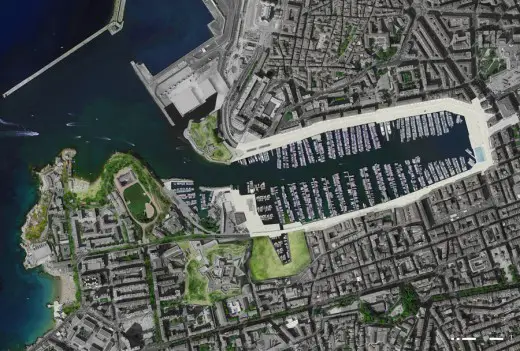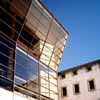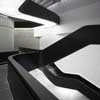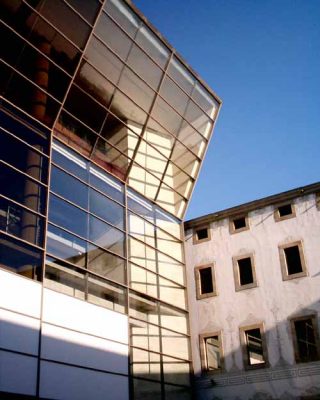European Prize for Urban Public Space 2016, Spain, Design Contest, Dates
European Prize for Urban Public Space
Centre de Cultura Contemporània de Barcelona / CCCB – Exhibition
European Prize for Urban Public Space 2016 – 7 May 2016
The members of the International Jury for the 2016 European Prize for Urban Public Space met at the Centre of Contemporary Culture of Barcelona (CCCB) on 28 and 29 April to decide the results of this year’s award.
From a total of 276 entries, the Jury selected 25 finalists.
18 Dec 2015
European Prize for Urban Public Space 2016
2016 European Prize for Urban Public Space Call for Entries
The European Prize for Urban Public Space is a biennial competition organized by seven European institutions with the aim to recognize and encourage the recovery projects and defense of public space in our cities. The Prize, created in 2000, celebrates its nineth award in 2016.
WHY PUBLIC SPACE?
Probably, one of Europe’s best contributions to humankind is its particular way of understanding urban public space. For millennia the Old Continent has been producing cities on a human scale, long-lived and yet dynamic, and open to cultural fertility and to the civic consciousness of their inhabitants. Far from being an exercise in nostalgia, defending the European model of the city is more urgent than ever today. When urban fabrics are changing and being stretched with unprecedented momentum, public space is still the best terrain from which to combat the injustices and folly that are presently ravaging them. The European Prize for Urban Public Space is a biennial honorary award which recognises, publicises and fosters the creation, recovery or improvement of shared spaces, understanding their state as a clear indicator of the democratic health of our cities.
CALL FOR ENTRIES
Seven European institutions are sponsoring the ninth European Prize for Urban Public Space, which is honorific by nature, is awarded jointly to the authors and promoters of the of the winning interventions. The prize-winners will receive a Diploma confirming the award. In addition, the winner of the Prize will receive a commemorative plaque, as well as a certificate that will be also delivered to special mentions. The prize-winning works, as well as the special mentions and the finalists will be published in the Archive of the Prize and will make part of the travelling exhibition of the 2016 Prize.The Jury of the 2016 Prize will take into consideration only those interventions that comply with the conditions of participation and it is empowered to declare the competition null and void. Secretariat functions will be performed by the Centre of Contemporary Culture of Barcelona, which designates the secretary who is to assist the jury and produce the minutes of the sessions during the selection process of the Prize winners.
CONDITIONS OF PARTICIPATION
Works that have created, recovered or improved public space within the geographic limits of the Council of Europe in the years 2014 and 2015 may present for the Prize. These entries must be presented by the authors or the institutions that have sponsored the public space project.
Given that some urban public space interventions are of very long duration, any project that has not been completely finalised in the time period of 2014-2015 may still present for the Prize if enough phases of the envisaged end result have been completed to enable evaluation of the eventual repercussions of the intervention as a whole within its urban setting.
SELECTION CRITERIA
The criteria that will govern selection of the prize-winning projects from among those that are presented for the European Prize for Urban Public Space will not only be related with the quality of the work from a strictly architectural point of view since the jury will also consider other aspects in its evaluation of the effects of the urban transformation that has taken place in the specific setting and its impact on collective life:
The explicitly urban nature of the intervention. The size of the city or town is not a limiting factor although priority will be given to medium-sized or large municipalities and those with a more general urban significance.
The public ownership and/or clearly public-spirited vocation of the project.
Appropriateness of interventions to the functions required of public space, from those directly linked with citizens’ occupation of a space, through to those pertaining to the collective imaginary.
Capacity of the interventions to reduce social fractures within the city and eliminate physical and/or symbolic barriers in order to enhance quality of life for the inhabitants.
Contribution of the projects in the domain of environmental improvement, in promoting public transport and innovation in the treatment of public installations, energy resources and urban waste.
The degree of citizen participation and engagement in the conception, production and/or subsequent maintenance of the space. Degree of acceptance of the project by users.
Transversal character of the planning concepts and/or objectives that have guided the project (sociology, demography, history, architecture, economy, engineering, landscaping, anthropology).
DOCUMENTATION REQUIRED
The documentation required from anyone who wishes to present for the Prize is:
Physical documentation:
3 numbered panels: these must be rigid (in foam board or similar material) in DIN A3 format and horizontal orientation. They must contain the following information:
Map (or photomap) showing the location of the work inside its urban context (to scale).
A pair of photographs of the site before and after the intervention, preferably from the same vantage point.
Photographs of the finished work. Images showing citizen use of the new space will be positively valued.
Textual explanations in English where deemed necessary.
Digital documentation:
During online registration, the following digital documentation will be required:
The three numbered DIN A3 panels in PDF format.
Technical data of the work.
A minimum of 10 JPG images (photographs and drawings).
Descriptive report, written in English, approximately 4,500 characters long, in four chapters (previous state, aim of the intervention, description and assessment).
ENTRY PROCEDURE
The entry procedure for the Prize, which is free of charge, consists of two parts:
1. On-line registration
On-line registration will be open on January 13. The participant must register on-line by filling in, first, the basic form regarding the submitted work and contact person and, then, providing all the other necessary information. The person entering for the Prize can continue to modify and complete the registration file as often as s/he wishes until the registration period closes. If registration file has not been closed by the participant during the registration period, it will be closed automatically on February 22 2016 at 12p.m. If the person entering for the Prize is presenting more than one work, the on-line registration procedure must be followed for each work separately. Detailed instructions regarding on-line registration may be found in this Registration Guidelines [PDF]
2. Presentation of the physical material at the CCCB
The following documentation must be submitted to the CCCB:
One printed and signed copy of the Rights Sheet (this may be found in the procedure for on-line registration) once the data have been duly completed.
The 3 numbered rigid panels in DIN A3 format and horizontal orientation.
The documentation must be submitted in a well protected packet through the post, delivered by messenger or in person at the CCCB before 22 February at 2 p.m. In the case of packages sent by post or messenger, the date of dispatch must be certified at the post office or by the messenger service, and the CCCB is to be notified of the dispatch of the package at [email protected] on the same day. The package should be sent to the CCCB general registry (open on non-holidays from Monday to Friday, from 9 a.m. to 2 p.m.), at the following address:
PUBLICSPACE 2016 / registration code
Registre General
Centre de Cultura Contemporània de Barcelona (CCCB)
Montalegre, 5
E-08001 Barcelona (Spain)
PROPERTY RIGHTS
The status of candidate for the Prize entails the free cession, to the CCCB and the other organising institutions, of the necessary non-exclusive exploitation rights pertaining to the material presented for the Prize, for all the countries of the world, until the rights enter the public domain with the only aim of dissemination and promotion, by means of any medium and in any form, of all the events and activities related with the Prize (exhibitions, publications, et cetera), and including its permanent availability for consultation in the Archive of the Prize.
PROTECTION OF DATA
In accordance with Organic Law 15/1999 of 13 December on protection of data of a personal nature (LOPD), the personal data supplied by candidates for the Prize will be incorporated in the CCCB file Activitats artístiques, culturals i educatives (Artistic, Cultural and Educational Activities), for which the Centre of Contemporary Culture of Barcelona is responsible and wherein they will be used with the only aim of administering all matters pertaining to the 2016 European Prize for Urban Public Space. Those concerned may exercise their rights to access, rectify, contest and/or cancel the use of the personal data by contacting the Management of the Centre of Contemporary Culture of Barcelona (c/. Montalegre, 5 // 08001 – Barcelona. Tel +34 93 306 41 00; [email protected]).
Participation in this contest implies acceptance of all the conditions specified in these rules.
INFORMATION AND DELIVERIES
Centre de Cultura Contemporània de Barcelona (CCCB)
Montalegre, 5
E-08001 Barcelona (Spain)
+34.93.306.41.00
www.publicspace.org
[email protected]
Website: European Prize for Urban Public Space 2016
27 Apr 2014
European Prize for Urban Public Space in 2014 Winners
European Architecture Competition Winners
The form of the city is intimately related with democracy. This is the thesis of the Prize which, since 2000, has recognised and publicised the results of transformations and improvements in the public spaces of Europe. Cities are far from being idyllic paradises. Some of the most serious problems of today’s society are concentrated and expressed in their public spaces. Fortunately, however, Europe also offers many exemplary cases of improvement in its public spaces, which are sensitive to the context and respect the collective and social dimensions of urban life. From Glasgow to Istanbul, from Lisbon to Bucharest, and over the fourteen years of its eight awards, the European Prize for Urban Public Space has become a privileged observatory of European cities.
CONVENING INSTITUTIONS The Centre of Contemporary Culture of Barcelona (CCCB) organises this prize together with six European institutions: the Deutsches Architekturmuseum of Frankfurt (DAM); the Museum of Finnish Architecture of Helsinki (MFA); the Museum of Architecture and Design of Ljubljana (MAO); The Architecture Foundation of London (AF); La Cité de l’Architecture et du Patrimoine of Paris (Cité) and the Architekturzentrum Wien of Vienna (AzW).
INTERNATIONAL JURY The president of the international jury for the eighth award of the Prize was Carme Ribas, representing the CCCB. The jury was comprised by Matevž Čelik, director of the MAO; Sarah Ichioka, director of the AF; Juulia Kauste, director of the MFA; Francis Rambert, director of the Cité; Peter Schmal, director of the DAM; and Katharina Ritter, head of exhibitions at the AzW. David Bravo i Bordas, representing the CCCB, was the jury secretary.
THE PRESENT AWARD In this year’s award a total of 274 projects from 194 cities and 30 European countries have been presented. The Prize is an honorary award to both authors and promoters of the works chosen. The prize-winning works, the finalists and a selection made by the jury will be published in the European Archive of Urban Public Space, which has brought together and publicised the best works presented for the Prize since it was first offered in 2000.
THE “SHARED CITIES” EXHIBITION The exhibition of this year’s prize-winning works will be open to the public at the CCCB from 25 April until 4 June. It will subsequently travel to several European and American cities, as was the case with the 2012 Prize exhibition, which was shown in Medellin, Toulouse, Bogotá, Paris, Lyon, Prague, Cartagena de Indias, Ljubljana, Quito, Caen, Luxembourg, Athens and New York.
JOINT WINNERS
MARSEILLE – RENOVATION OF THE OLD PORT
JOINT WINNER
The renovation of the Vieux-Port clears the docks of visual and architectural barriers, thus making the presence of leisure boats compatible with access and enjoyment of all citizens.
PREMI EX AEQUO, Marseille, before intervention, Michel Desvigne Paysagiste:

photo © MDP
The Vieux-Port of Marseille is the largest urban harbour in Europe. The foundational site of the capital of Provence, it was also the region’s economic centre until midway through the nineteenth century, when transport of goods and passengers was moved to the Grand Port Maritime. The old harbour has a narrow entrance flanked by two old fortifications and it occupies a natural bay where the central districts of the city converge. However, despite its beauty and central location, the port fell into neglect and a state of disrepair by the end of the twentieth century. The premises of yacht clubs, which cluttered the port with architectural and visual barriers, blocked public access to 80% of the docks area where, moreover, the fact that priority was given to cars, discouraged pedestrian use.
PREMI EX AEQUO, Marseille, Michel Desvigne Paysagiste:

photo © MDP
PREMI EX AEQUO, Marseille, overall Plan 2020, Michel Desvigne Paysagiste:

photo © MDP
In 2009, the City Council and the Marseille Provence Métropole (MPM) called for entries in a competition aimed at rectifying the situation. The first phase of the renovation work has cleared obstacles and vehicular transport from the port’s three wharves, which are now uniformly paved in pale granite evoking the original limestone cobblestones. The Quai des Belges, the central wharf, devotes 60% of its surface to pedestrians and protects them from the sun beneath the Grande Ombrière, a rectangular canopy of 1,000 m2, which can also be used for large crowd-pulling events. New floating docks have been installed in order to accommodate water activities without interfering with the pedestrian flow or views.
PREMI EX AEQUO, Marseille, Grande Ombriere:

photo © N.Young Foster Partners
PREMI EX AEQUO, Marseille, Quai du Port:

photo © TANGRAM
Thanks to a consultative process, which took into account the suggestions of residents, businesspeople and local associations before calling for entries in the competition, the port has recovered its vitality by means of taking the general interest into account. The presence of leisure craft, which fosters economic and associative activity, has been made compatible with access and enjoyment for all citizens. Hence, while other city ports combat economic decline by allowing privatised uses that undermine their role as public space, the Vieux-Port has been renovated by expanding its condition of a shared place that is open to everyone.
ELX – “THE BRAIDED VALLEY”
JOINT WINNER
The Braided Valley in Elche, Spain
A network of interlaced paths and footbridges has transformed the bed of the Vinalopó River into a linear park that stitches together the neighbourhoods through which it passes, connecting them with natural spaces to the north of the city.
H190, PREMI EX AEQUO, Elx, before 2006:

photo © José Manuel Pérez
The Vinalopó River is considerably reduced when it crosses the city of Elche. Irrigation upstream and very irregular rainfall mean that water only flows in any abundance in autumn, when sudden flooding can occur. This has cut out a riverbed with steep sides, mainly as a result of landslides. In the 1970s, major channelling work put an end to flooding but also eliminated the network of paths by means of which residents on the right bank could reach the adjoining Palmeral, a vast palm grove which is inscribed in the UNESCO World Heritage List. Relegated to the condition of a marginal rubbish tip, the watercourse became a barrier that divided the city into two halves, both facing away from it.
H190, PREMI EX AEQUO, Elx, paseo:

photo © Jesús Granada
H190, PREMI EX AEQUO, Elx, puente:

photo © Jesús Granada
In 2009, the City Council called for entries in a competition aimed at converting the riverbed into a three-kilometre-long linear park. The first phase of the work was completed on the upstream section where the social deterioration of the neighbourhoods and scarcity of bridges made improvement most urgent. A temporary in situ office collected data on the areas of movement that were most requested by future users. A network of paths was thus opened and led the place to be known as “The Braided Valley” because they criss-cross on both sides of the river, which were also replanted with autochthonous species of vegetation. Before reaching the walls of the channel and joining to cross the riverbed, the paths rise up in a Y-shape forming two footbridges resting on clusters of metal pillars which resemble tree trunks and give lightness to the structure.
H190, PREMI EX AEQUO, Elx, rampa:

photo © Jesús Granada
H190, PREMI EX AEQUO, Elx, vista panòramica:

photo © Jesús Granada
Before completing the first phase, the new city council stopped work on the project it had inherited but did not embrace as its own. “The Braided Valley” has not been officially opened yet, although local residents have spontaneously made it theirs. With similar spontaneity, the riverside paths and bridges disregard the orthogonal nature of the urban layout and anticipate tracks which a pedestrian’s common sense would leave on a badly situated parterre or on the ground of a snowbound city. It is to be hoped that common sense will prevail and that work on this park, which already stitches together the neighbourhoods through which it passes and connects them with natural spaces to the north of the city of Elche, will soon proceed anew.
Further information: http://www.publicspace.org/en
5 Apr 2014
European Prize for Urban Public Space in 2014
European Architecture Competition Exhibition
The President of the Consortium of the Centre de Cultura Contemporània de Barcelona, Salvador Esteve i Figueras, is to hold the
European Prize for Urban Public Space 2014 Award Ceremony
at the CCCB on Friday 25 April 2014 at 7 pm,
followed by the inauguration of the exhibition of the winning works.
Centre de Cultura Contemporània de Barcelona / CCCB:
The event will feature the participation of Carme Ribas, president of the jury for the 2014 Prize. The event will be streamed live via the website www.publicspace.org.
On Saturday 26 April at 11 a.m., there will be a visit to the exhibition with comments by the authors of the winning works.
The exhibition will be open until 4 June. Free admission.
www.publicspace.org
European Prize for Urban Public Space
Centre de Cultura Contemporània de Barcelona
European Architecture Competition
The European Prize for Urban Public Space was set up by the Centre de Cultura Contemporània de Barcelona and the Institut Français d’Architecture was first awarded in the year 2000.
Centre de Cultura Contemporània de Barcelona / CCCB:
The European Prize for Urban Public Space was set up to recognise the movement for the recovery and creation of urban public spaces which has taken place throughout Europe over the past twenty years, and has taken the shape of a series of outstanding, often little-known, interventions. These interventions reflect a new appraisal of public space, understood as a space replete with functional and symbolic values where citizens can meet and socialise and which recognises the fundamental role public spaces have always played in defining European cities. The Prize is not only awarded to architects but also, and most importantly, to the public institution which has promoted the project.
Centre de Cultura Contemporània de Barcelona – CCCB:

photo © Adrian Welch
European Prize for Urban Public Space information from CCCB
Location:Europe
Barcelona Architecture
Barcelona Centre of Contemporary Culture / Centre de Cultura Contemporania de Barcelona [CCCB], Ciutat Vella, Barcelona
1994
Pinon, Viaplana, Mercade, Architects

photo © Adrian Welch
Architecture Prizes in Europe
World Architecture Festival Awards

photo : Roland Halbe
Venice Biennale European Pavilion
Comments / photos for the European Prize for Urban Public Space 2014 and 2015 page welcome
European Prize for Urban Public Space – page
Website: www.cccb.org






